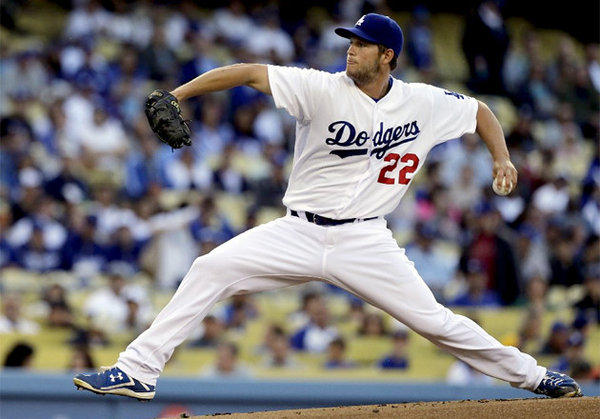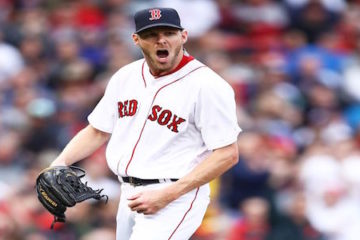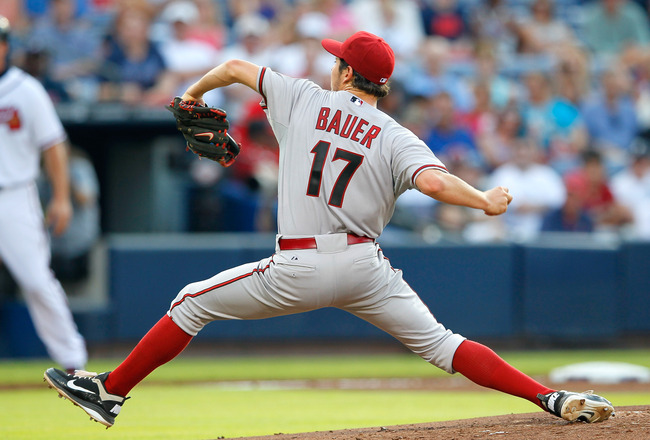2013 Fantasy Baseball, The Rubber – Week 9: BABIP, BABIP, BABIP

Lately I’ve been talking a lot about a recent study by Baseball Prospectus’ Russell Carleton in which he establishes the point at which certain statistics stabilize. I’ve been using it to look at the statistics that have passed their stabilization point already this season to identify some guys who have made some improvements. But today I want to see which pitchers have allowed enough balls in play in their career to pass the very high stabilization point for BABIP which is 2,000 balls in play. Balls in play does not count home runs since they don’t stay within the field of play.
Below is a list of the 54 qualified starters in 2013 who have allowed 2,000 balls in play in their career. I’ve also listed their career BABIP, their 2013 BABIP and the difference between the two.
| Name | Career BABIP | 2013 BABIP | Gap |
|---|---|---|---|
| Joe Blanton | 0.304 | 0.386 | 0.082 |
| Justin Verlander | 0.287 | 0.368 | 0.081 |
| Barry Zito | 0.271 | 0.34 | 0.069 |
| David Price | 0.281 | 0.345 | 0.064 |
| Doug Fister | 0.292 | 0.338 | 0.046 |
| Jon Garland | 0.286 | 0.327 | 0.041 |
| Edwin Jackson | 0.304 | 0.341 | 0.037 |
| Brandon McCarthy | 0.289 | 0.323 | 0.034 |
| Adam Wainwright | 0.296 | 0.326 | 0.03 |
| Yovani Gallardo | 0.298 | 0.326 | 0.028 |
| Joe Saunders | 0.293 | 0.32 | 0.027 |
| Anibal Sanchez | 0.301 | 0.327 | 0.026 |
| Dan Haren | 0.292 | 0.315 | 0.023 |
| Felix Hernandez | 0.299 | 0.32 | 0.021 |
| C.J. Wilson | 0.29 | 0.31 | 0.02 |
| Tim Hudson | 0.279 | 0.297 | 0.018 |
| Jason Vargas | 0.277 | 0.292 | 0.015 |
| CC Sabathia | 0.292 | 0.306 | 0.014 |
| Tim Lincecum | 0.296 | 0.309 | 0.013 |
| Kyle Lohse | 0.298 | 0.309 | 0.011 |
| Bartolo Colon | 0.292 | 0.301 | 0.009 |
| Jason Hammel | 0.314 | 0.319 | 0.005 |
| Kevin Correia | 0.292 | 0.296 | 0.004 |
| Mark Buehrle | 0.29 | 0.294 | 0.004 |
| Ian Kennedy | 0.281 | 0.282 | 0.001 |
| Cole Hamels | 0.281 | 0.276 | -0.005 |
| Edinson Volquez | 0.299 | 0.292 | -0.007 |
| Homer Bailey | 0.301 | 0.293 | -0.008 |
| A.J. Burnett | 0.289 | 0.279 | -0.01 |
| Kyle Kendrick | 0.284 | 0.274 | -0.01 |
| Ubaldo Jimenez | 0.29 | 0.277 | -0.013 |
| Paul Maholm | 0.305 | 0.29 | -0.015 |
| Ryan Dempster | 0.302 | 0.285 | -0.017 |
| Clay Buchholz | 0.28 | 0.263 | -0.017 |
| Bronson Arroyo | 0.283 | 0.265 | -0.018 |
| Jake Peavy | 0.284 | 0.265 | -0.019 |
| Ervin Santana | 0.284 | 0.265 | -0.019 |
| Ricky Nolasco | 0.308 | 0.289 | -0.019 |
| Jorge de la Rosa | 0.303 | 0.283 | -0.02 |
| Trevor Cahill | 0.274 | 0.254 | -0.02 |
| R.A. Dickey | 0.285 | 0.264 | -0.021 |
| Justin Masterson | 0.304 | 0.281 | -0.023 |
| Jeremy Guthrie | 0.273 | 0.249 | -0.024 |
| Matt Cain | 0.263 | 0.238 | -0.025 |
| James Shields | 0.297 | 0.269 | -0.028 |
| Jon Lester | 0.3 | 0.27 | -0.03 |
| Gio Gonzalez | 0.283 | 0.253 | -0.03 |
| Cliff Lee | 0.294 | 0.259 | -0.035 |
| Hiroki Kuroda | 0.279 | 0.244 | -0.035 |
| Wandy Rodriguez | 0.295 | 0.259 | -0.036 |
| Jason Marquis | 0.287 | 0.247 | -0.04 |
| Max Scherzer | 0.311 | 0.266 | -0.045 |
| Clayton Kershaw | 0.271 | 0.223 | -0.048 |
| Scott Feldman | 0.293 | 0.244 | -0.049 |
Next I decided to take a look at the pitchers on either extreme of the list and see if their expected BABIPs (xBABIP) this year match up with their career BABIPs.
If you’re unfamiliar with BABIP, the idea behind it is that pitchers don’t have a ton of control over whether balls in play go for hits. There are too many variables that have nothing to do with the pitcher that determine whether a ball in play turns into a hit or an out. But they do have some control. The xBABIP factors in some things that a pitcher does have control of that can have an impact on BABIP.
Matt Swartz did some excellent work for Fangraphs in 2011 and found that more strikeouts and fly balls lead to lower BABIPs. This makes sense. Pitchers who can avoid contact via strikeout can also induce more weak contact. And fly balls go for hits less than balls hit on the ground. So his xBABIP formula is .290 + (.045 x GB%) – (.103 x K%) = xBABIP. Below are the 2013 BABIPs, career BABIPs and xBABIPs for all pitchers whose gap between 2013 and career BABIP was substantial in the chart above.
| Name | 2013 BABIP | Career BABIP | xBABIP |
|---|---|---|---|
| Joe Blanton | 0.386 | 0.304 | 0.297187 |
| Justin Verlander | 0.368 | 0.287 | 0.2802 |
| Barry Zito | 0.34 | 0.271 | 0.292359 |
| David Price | 0.345 | 0.281 | 0.290742 |
| Doug Fister | 0.338 | 0.292 | 0.296434 |
| Jon Garland | 0.327 | 0.286 | 0.300135 |
| Edwin Jackson | 0.341 | 0.304 | 0.290799 |
| Brandon McCarthy | 0.323 | 0.289 | 0.294936 |
| Cliff Lee | 0.259 | 0.294 | 0.293569 |
| Hiroki Kuroda | 0.244 | 0.279 | 0.291247 |
| Wandy Rodriguez | 0.259 | 0.295 | 0.300318 |
| Jason Marquis | 0.247 | 0.287 | 0.27706 |
| Max Scherzer | 0.266 | 0.311 | 0.283606 |
| Clayton Kershaw | 0.223 | 0.271 | 0.29293 |
| Scott Feldman | 0.244 | 0.293 | 0.29293 |
Everyone’s xBABIP indicates regression to the mean. This is not a surprise.
Although they’ll see positive regression, Zito, Price, and Garland aren’t displaying near the same level of hit prevention skills that they have previously in their career. The regression might not be as extreme for them.
Jackson and Verlander’s xBABIPs indicate that their hit prevention skills have been better this year than previously. Verlander is an obvious trade target, and Jackson is worth a look if he’s on the wire.
Kuroda and Kershaw have also seen lesser hit prevention skills this year, and their regression could be more than just to their career BABIP if that continues. I can’t imagine anyone trading away Kershaw, and this doesn’t seem like enough of a reason to do so. But Kuroda might be a guy to deal.
The real star that sticks out in this exercise is Scherzer. He’s got the third largest gap between his 2013 BABIP and career BABIP, but his xBABIP shows that he’s had something to do with it, it hasn’t been all luck. Don’t sell him because of BABIP regression fear. In fact, his strand rate is unsustainably low right now, so he’s an excellent trade target.




